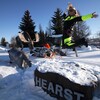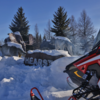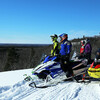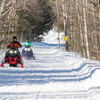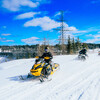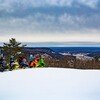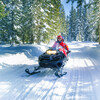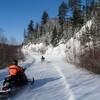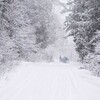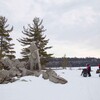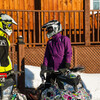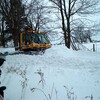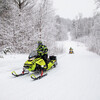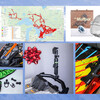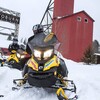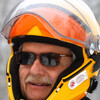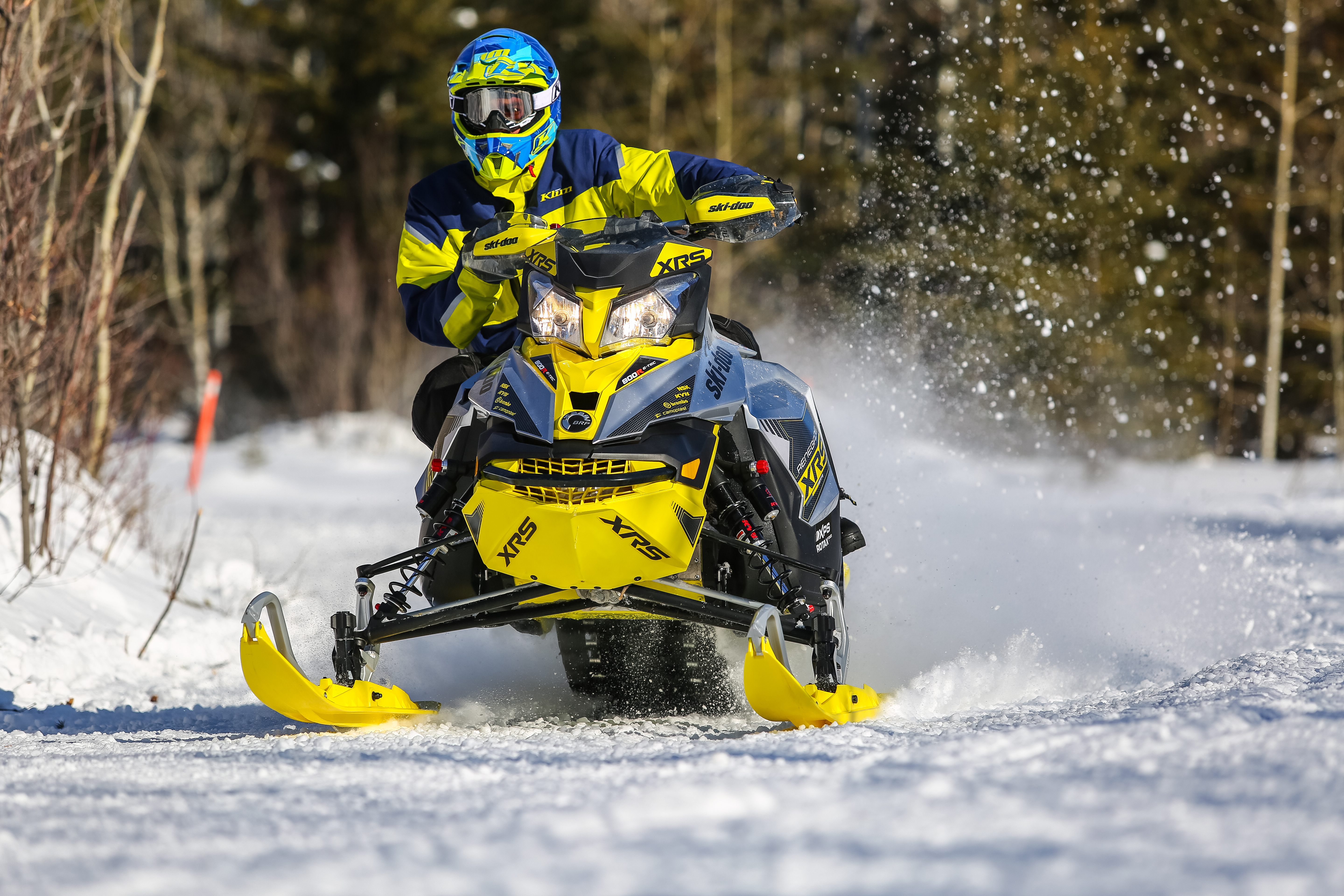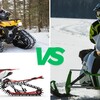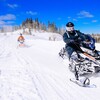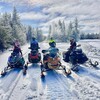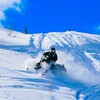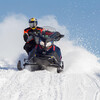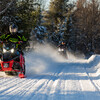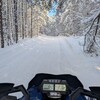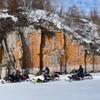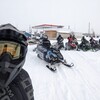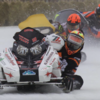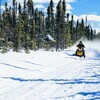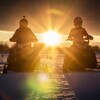
Top Tips For Northeastern Ontario Backcountry Riding Opportunities
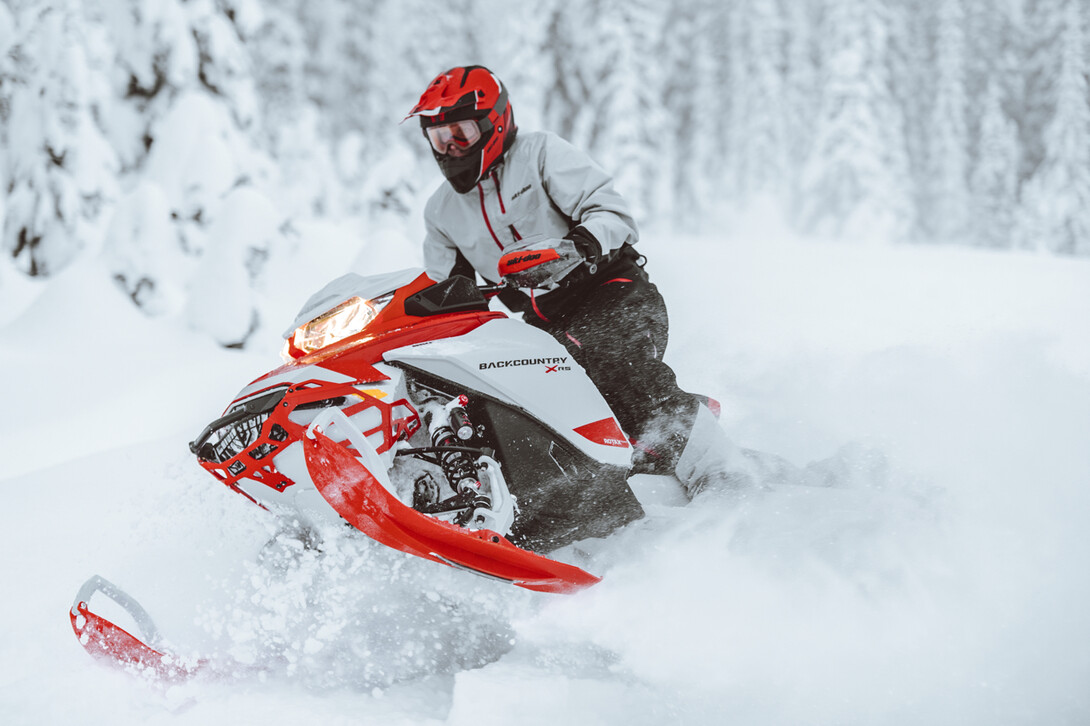
Typically, snowmobilers head to Northeastern Ontario for its primo trail riding. About 90% of the region is Crown Land with oodles of fresh powder and lots of old access roads. But with the lone exception of the popular Abitibi Canyon, backcountry riding hasn’t been very prominent on visitors’ snowmobiling radar.
About Abitibi
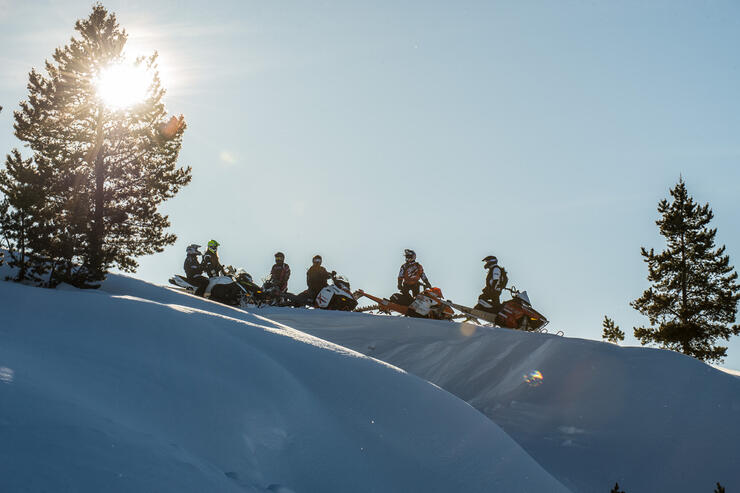
The Abitibi Canyon, located north of Cochrane, is a topographic anomaly. It’s laced with steep hills, deep valleys and oodles of powder snow. Almost as if the Disney people had created special terrain for flatlanders wanting to test their hill climbing, side hilling and powder riding skills.
The area has several scary drop-offs and steep climbs. It also passes through enough challenging hills to keep most adrenalin junkies fixed for several hours. The only way to know for sure that you haven’t suddenly been transported to outside of Northeastern Ontario is the absence of mountain peaks towering in the background. Otherwise, the Abitibi Canyon offers some of the province’s best backcountry riding.
11 More Backcountry Locations
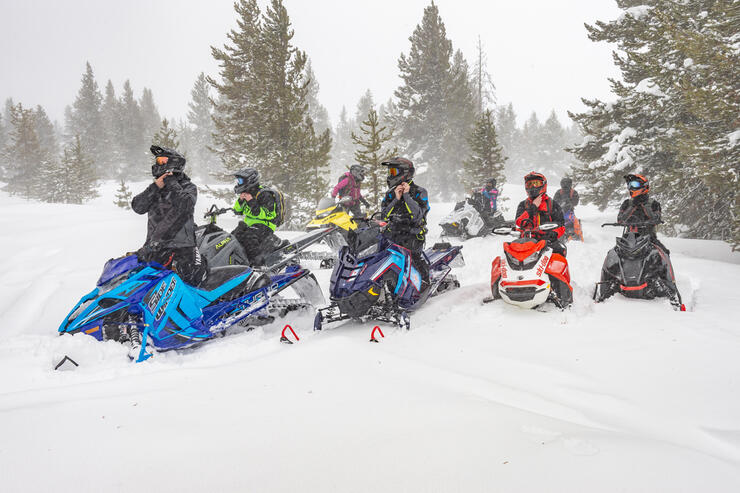
But this winter, the Abitibi Canyon gets some stiff competition. A partnership of local Francophone communities have identified 11 more backcountry riding areas from Cochrane to Hearst under the brand “Aventure Nord”. They are listed under “Backcountry” on the newly translated Aventure Nord website with text descriptions and map locations.
These backcountry opportunities didn’t just suddenly materialize out of nowhere. In fact, local powder hounds have been riding them for years. One of the identified areas is north of Cochrane (as is Abitibi Canyon). Others locations include 1 north of Smooth Rock Falls, 4 around Kapuskasing, 1 north of Mattice and 4 in the Hearst area.
This expanded backcountry product opens a whole new riding experience in Northeastern Ontario. It’s one with great potential, but still in its infancy. It’s also totally different and separate from the OFSC trails visiting snowmobilers are used to riding. Among other considerations, this means these backcountry areas have no signs or services, and so snowmobilers entering any of them must be experienced and properly equipped for powder riding.
Cautions About Riding the Backcountry
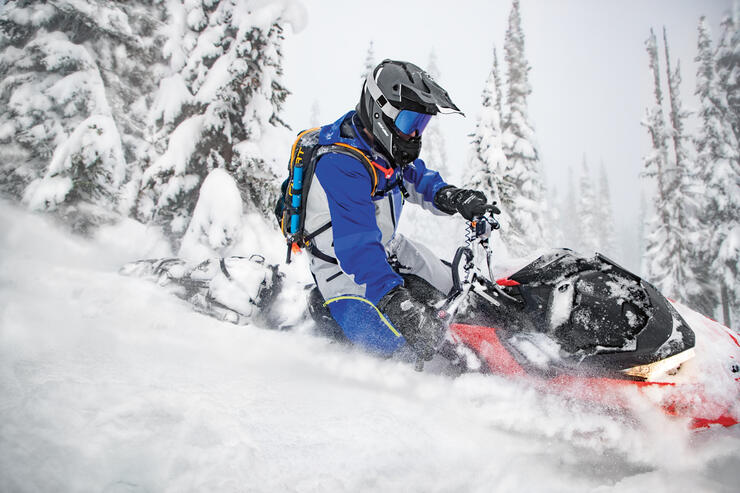
That’s because backcountry riding occurs in an unpredictable, uncontrolled and unmaintained natural environment far from local and emergency services. Each rider participates at his or her own risk and must assume complete responsibility and liability for his or her own snowmobiling decisions, choices and actions. In other words, you’re on your own!
It is also imperative that every snowmobiler always plans ahead for every backcountry ride to be fully prepared for the unexpected, including emergency situations such as personal injury, sled damage/breakdown, deteriorating weather conditions, getting lost or getting stuck. And that planning is far more critical and very different from prepping for a ride on organized and maintained snowmobile trails.
But one thing is the same. Where access to designated backcountry riding areas may include riding on OFSC Prescribed Trails, a valid Snowmobile Trail Permit is required by law on each recreational sled. Also, while using an OFSC trail, riders must stay on the trail without wandering off it, until exiting from that trail where they choose to head off into the backcountry.
In addition, the Crown Land Act stipulates as follows regarding snowmobiles. You can snowmobile on Crown Land if it is not restricted (e.g. through planning or by signage). But you must comply with any applicable legislation, such as the Motorized Snow Vehicles Act. The Act also specifies that you must have a valid Snowmobile Trail Permit to ride any OFSC trails on Crown Land.
To assist in making smart backcountry riding choices, the following list includes valuable advice* that is highly recommended for each rider to consider in their individual effort to mitigate their own backcountry risks.
What To Take Backcountry Riding
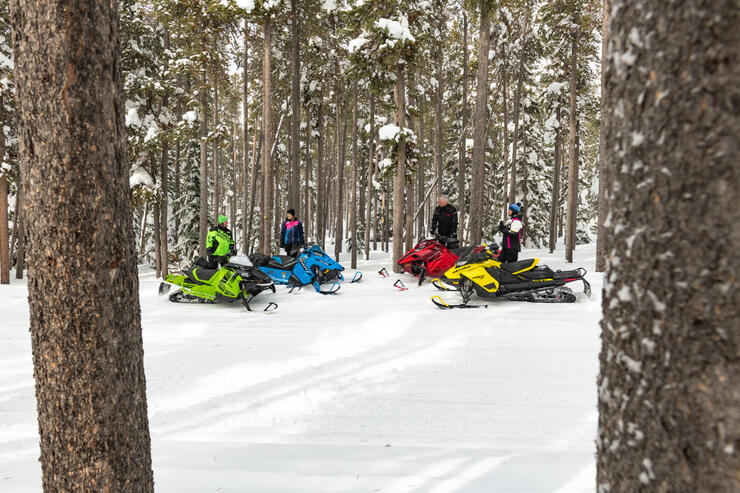
Enough extra fuel for all sleds.
A backcountry area topographical map if available.
More than one working GPS unit with backcountry area GPS coordinates uploaded and spare batteries.
Emergency, first aid & survival gear, including towrope and folding shovel, plus extra gloves and under layers, high-energy drinks and snacks.
A working communications device, such as a SPOT X-type unit or satellite phone (there may be no cell service).
Waterproof snow gear and wicking layers.
Before Going Backcountry Riding
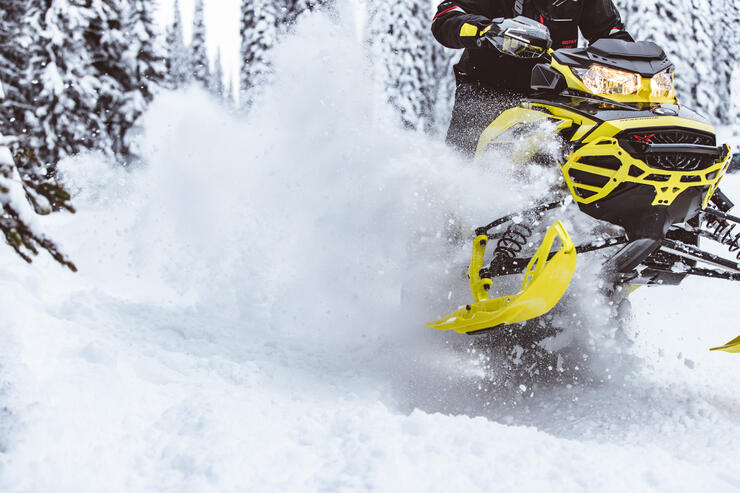
Ensure your snowmobile is designed and capable for backcountry riding and conditions by consulting with your local dealer or other snowmobile professional for sled calibration, model advice and pre-ride service.
Familiarize yourself with weather, snow and road conditions by visiting sites such as Environment Canada, The Weather Network, Accuweather, Coolwx and MTO Winter Road Condition Reports.
Familiarize yourself with techniques and tools for powder riding and getting unstuck.
Talk to locals for information and advice about backcountry riding locations, conditions and what to expect.
Leave your daily destination plan and return time with a friend or your hotel front desk.
Wherever possible, arrange for a local guide especially if it’s your first time in the area.
Fill up all gas tanks before leaving town each day and travel with a gas can of extra fuel to help ensure that you don’t run before returning.
Make Smart Choices While Backcountry Riding
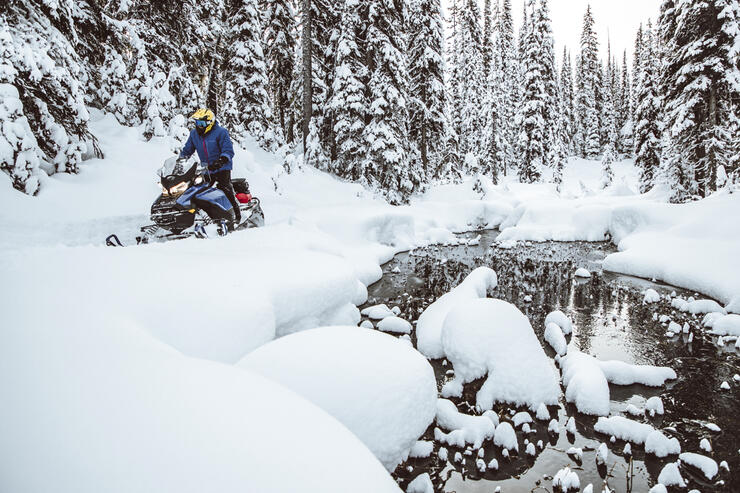
Ride with only one person per sled.
Ride with a group, never alone (minimum of one other able-bodied companion on their own sled).
Always keep your group together in the backcountry and be aware of where everyone is.
Follow 1/3-1/3-1/3 rule: use 1/3 gas to get there, 1/3 for playing, and leave at least 1/3 to get back.
Watch for natural markers along the way that you can find again for your return trip (e.g. a large rock, a different type of tree, etc.) These can help you navigate in and out of the riding area.
Always be aware of your surroundings and remember that deep snow can hide many obstacles that can substantially damage your sled or cause personal injury.
Exit the backcountry area on your return journey earlier enough to at least make it back to the groomed trail before dark.
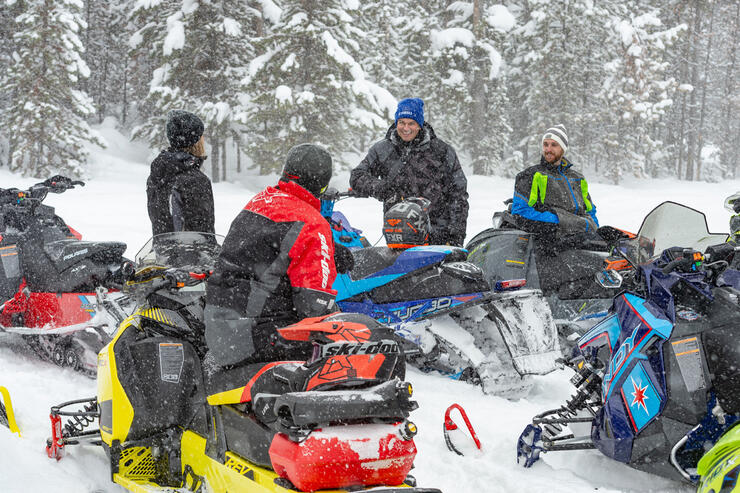
These new backcountry riding opportunities are one more great reason for snowmobilers to visit Northeastern Ontario. Although not yet fully developed, this offering has the potential to provide a new kind of exciting fun and amazing memories for those who want to expand their riding adventures. So check ‘m out this winter!
Disclaimer: The above may not be a complete or comprehensive list of every consideration for backcountry riding, nor is it intended as an endorsement of any backcountry riding destination. It is intended only to provide backcountry riders with some common sense guidelines for making their own smart choices and developing a suitable ride plan and preparations for their own safety and security.
Recommended Articles

The Complete List of Snowmobile Events in Ontario 2025-2026

The Best Snowmobile-Friendly Lodges
Snowmobiling Winter Weather Forecast 2025-2026

I Rode the Explorers Snow Tour in Ontario and Here’s What It Was Like

Why Ontario is One of the Best Snowmobile Destinations in the World
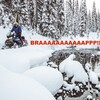
11 TikToks That Prove Ontario is the Best Place To Go Snowmobiling

5 Weekend Snowmobile Getaways Near the GTA
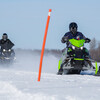
31 Ways To Get In The Know About Snowmobile Trail Riding in Ontario
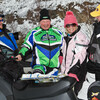
A Beginner's Guide to Snowmobile Lingo

